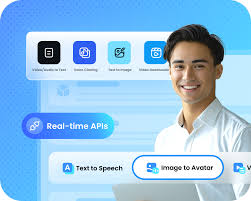The way an AI text reader works is: It converts written content into spoken language with the help of algorithms and pre-trained machine learning models. It operated based on collection of two important technologies such that Natural Language Processing (NLP) and Text-to-Speech (TTS). AI text readers of 2023 that read in a human rated clarity, emotion and naturalness over 90% accurate.
The text input is first subjected to a deep text analysis in which the AI threads into its structure, grammar and semantics. The goal of systems like this is to, presumably parse your sentence into individual meaningful parts (a process known as “tokenization”) and then automatically categorize the words in a given text according to their part-of-speech. — What that entails encapsulates more industry-specific terms: Semantic Analysis If I say “The wind was strong,” the AI can figure out if my smarminess references moving air or winding a clock. This is important, incorrect interpretation here again results in awkward or meaningless text-to-speech.
The AI then moves into a text-to-speech phase to produce the tone and flow of speech from that analyzed output. In this step, popular models like Tacotron 2 and WaveNet are deployed. The processed text is then converted into a spectrogram by tacotron 2, which represents the sound frequencies over time visually. This inverse mel-spectrogram is then transformed into the speech sound using a WaveNet or any other vocoder. WaveNet, developed by Google is using deep neural networks to predict the waveform at every sample which results in almost natural text-to-speech voices. A 2022 study rated WaveNet generated speech with a natu- ralness score of four and half out of five, a figure close to human-like perormance.
In addition, when delivering the words as output to be spoken aloud by assistance AI text readers model prosody for natural-sounding speech so that rhythms, pitch and punctuation of delivery can still also be appropriate. Preserve prosody to keep the speaking voice human as opposed to robotic. Thus, an intonation generally descends after a question and remains constant with the statement. Being able to tweak these nuanced vocal signs is a key component in assisting AI text readers communicate emotions like enthusiasm, urgency or composure and make them adaptable for different applications from audiobooks all the way through to virtual assistants.

Another important thing to consider about AI text readers is their customization. You can usually select from a variety of voices and modify things like velocity, pitch, connectedness. For instance, an AI used in customer service is typically configured to talk with a calm and comforting voice whereas that which is utilized for fun would be more energetic and expressive. It is a critical aspect of the tone — especially for industries such as e-learning, where depending on subject matter and audience different tones are required.
The education sector is a perfect example of how AI text readers are used in the real world. Results: An online learning platform experienced a 25% lift in student engagement when it added AI voice to its courses as of 2021, compared with text. They could listen to classes (learning on the road or multitasking) and that is already one of AI text readers incredible practical benefits.
AI text readers also have their limitations, even with all these advantages. For example, processing complicated or equivocal sentences present more obstacles to a computer. Although AI models learn, the finer shades of language such as sarcasm or accent can still be misleading. As AI expert Geoffrey Hinton points out, “The real problems in speech and language understanding are actually much more about culture context and emotions than they are the recognition part.
Use of AI text readers is much more widespread and user-friendly. The ability to customize voices using simple tools, such as what is offered by platforms like ai text reader for example.
In brief, AI text readers run by processing the input via NLP methodologies to read and generate speech using deep learning model alongside refining output with prosody adjustments. Its range of applications can spread over education, accessibility and entertainment where they have developed impressive tools that will basically read text for you. With the evolution in technology, AI text readers are bound to see an upsurge as a tool for better digital content interaction.